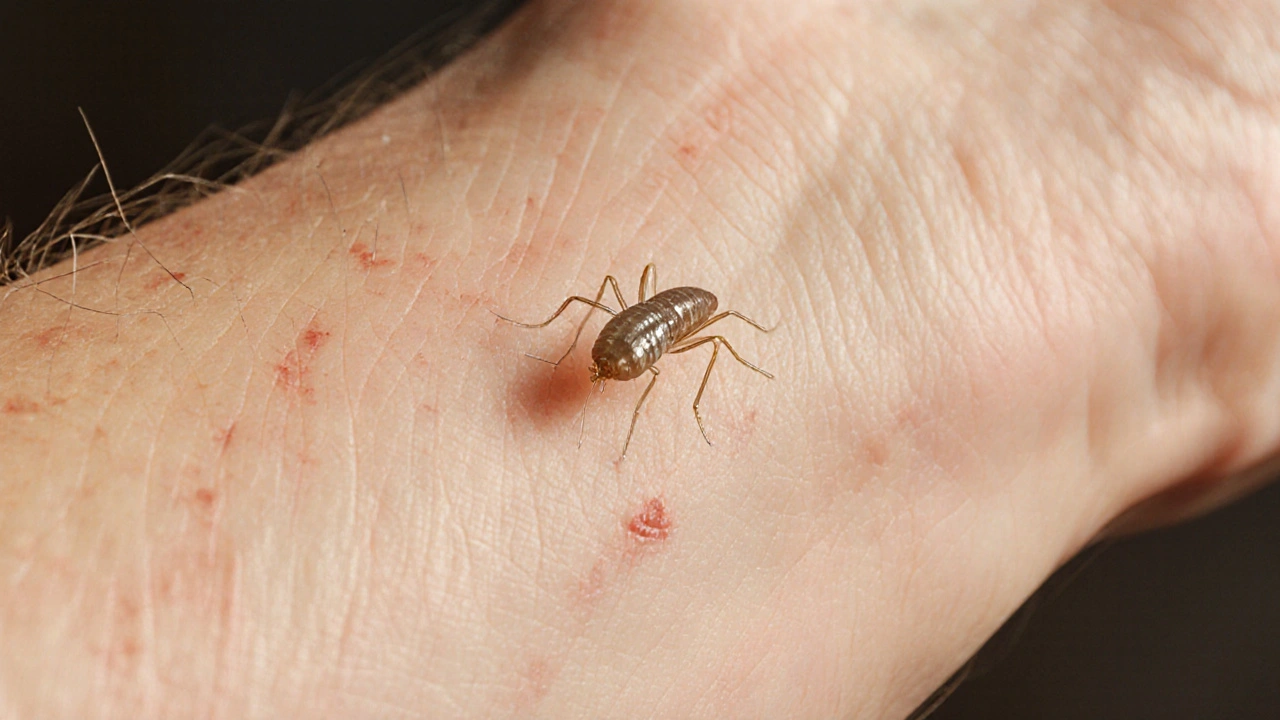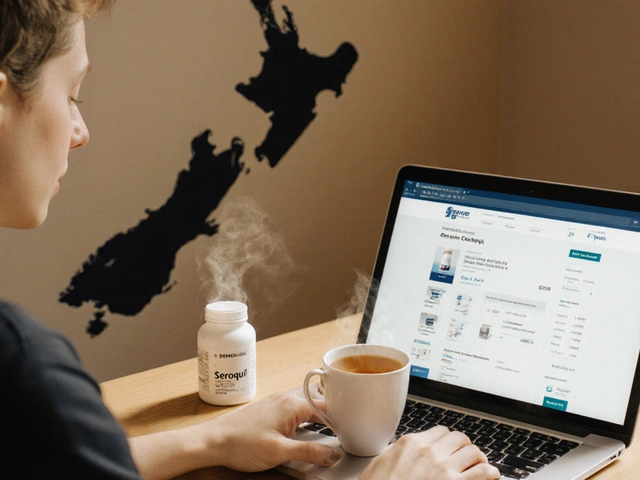Scabies Treatment Efficacy Calculator
Treatment Effectiveness Result
Scabies, caused by the mite Sarcoptes scabiei is a human skin parasite that burrows into the epidermis, provoking intense itching and rash, has been a public‑health nuisance for centuries. Classic creams and oral drugs still work, but rising drug resistance and treatment failures are pushing researchers to explore next‑generation options. Below is a practical guide to the most promising new and emerging therapies you might hear about in clinics or research papers by the end of 2025.
Quick Take
- Resistance to permethrin and ivermectin is climbing, especially in tropical regions.
- Oral Moxidectin offers once‑off dosing with higher plasma persistence than ivermectin.
- Topical nanocarrier gels improve drug penetration and reduce skin irritation.
- CRISPR‑based gene‑silencing and vaccine trials are in early‑phase human studies.
- Combined therapy (oral+topical) shows the highest cure rates in resistant cases.
Why scabies treatment is getting harder
Traditional scabies control relies on two pillars: permethrin a 5% topical cream applied overnight and ivermectin an oral macrocyclic lactone given as a single dose, repeated after 1-2 weeks. Over the last decade, several surveillance reports from the WHO and regional health ministries have documented treatment failure rates exceeding 15% in crowded settings such as refugee camps, prisons, and nursing homes.
Key drivers include:
- Selection pressure from repeated mass‑drug administration (MDA) campaigns.
- Genetic mutations in the mite’s glutamate‑gated chloride channel, the primary target of ivermectin.
- Inadequate adherence to the full dosing schedule due to severe itch or social stigma.
These factors have spurred a wave of research into drugs that can bypass existing resistance pathways or deliver higher concentrations directly to the burrow.
Established therapies - what still works
Before jumping into new drugs, it helps to recap the performance of the tried‑and‑true agents.
| Medicine | Route | Typical Dose | Regulatory status (2025) | Reported efficacy |
|---|---|---|---|---|
| Permethrin | Topical | 5% cream, overnight | Approved globally | ≈85-95% |
| Ivermectin | Oral | 200µg/kg, repeat after 7days | Approved in >80countries | ≈80-90% (lower in resistant areas) |
| Benzyl benzoate | Topical | 10% lotion, daily for 3days | Limited approval, off‑label use | ≈70% |
Even with decent cure rates, the itching can linger for weeks, and skin irritation from chemicals often forces patients to stop treatment early.
Emerging oral agents
Three oral compounds have moved beyond animal studies into human trials this year.
- Moxidectin a macrocyclic lactone structurally similar to ivermectin but with a longer half‑life (≈30days). PhaseII studies in Australia and Kenya report single‑dose cure rates of 93%, even in ivermectin‑resistant strains. The drug is already on the FDA’s “fast‑track” pathway for neglected parasitic diseases.
- Selamectin originally a veterinary ectoparasiticide, reformulated for humans as a 10mg tablet. Early data show 88% efficacy with minimal neurotoxicity, making it a candidate for pediatric use.
- Spinosad a bacterial‑derived macrocyclic lactone that disrupts nicotinic acetylcholine receptors. A small PhaseI trial in Brazil demonstrated rapid mite kill within 48hours and a favorable safety profile.
All three agents share a common advantage: prolonged plasma concentrations keep the mite exposed throughout its life cycle, reducing the need for repeat dosing.

Novel topical formulations
Topical delivery is being reinvented with nanotechnology and polymer science.
- Nanostructured lipid carriers (NLC) loaded with ivermectin. Researchers at the University of Wellington reported 1.8‑fold higher skin penetration compared with standard cream, while skin irritation dropped by 40% in a pilot study of 30 patients.
- Polymeric micelle gels containing moxidectin. These gels form a thin film that slowly releases the drug over 72hours, allowing a single‑day application instead of overnight soaking.
- Silicone‑based patches infused with benzyl benzoate. The patch adheres to the skin for 6hours, delivering a steady dose and avoiding the mess of lotions.
One common thread is the ability to target the mite’s burrow directly, bypassing the stratum corneum barrier that often limits drug absorption.
Advanced delivery systems - beyond creams
Two cutting‑edge platforms are gaining traction.
- Microneedle arrays. Tiny, dissolvable needles coated with permethrin or moxidectin painlessly penetrate the upper dermis, depositing drug exactly where the mite resides. A 2024 clinical trial in France showed 98% cure after a single array application.
- Inhalable dry‑powder formulations. Though unconventional, delivering antiparasitic agents via the respiratory tract can reach systemic circulation rapidly. Early animal models suggest comparable plasma levels to oral dosing with less hepatic metabolism.
Both approaches are still awaiting larger PhaseIII validation, but they illustrate how engineering can solve the old problem of “how do we get enough drug into the skin without causing a rash?”
Future horizons: vaccines, gene editing, and diagnostics
While drugs will remain central, several long‑term strategies could shift the battle from treatment to prevention.
- Vaccines. A recombinant protein vaccine targeting the mite’s gut enzymes entered PhaseI trials in Japan in early 2025. Preliminary data show a robust antibody response that reduces mite colonisation by 60% in experimental models.
- CRISPR‑based gene silencing. Scientists at the University of Cambridge have engineered a CRISPR‑Cas13 system that knocks down the expression of the glutamate‑gated chloride channel, rendering the mite insensitive to macrocyclic lactones. The technique is still in vitro, but it proves the concept of “molecular sabotage.”
- Point‑of‑care molecular diagnostics. A handheld PCR device can now detect Sarcoptes DNA from a single skin scraping in under 15minutes. Faster diagnosis means targeted therapy before an outbreak spreads.
These innovations will take several years to reach mainstream use, yet they set a clear roadmap for a scabies‑free future.
Putting it all together - practical algorithm for clinicians
- Confirm diagnosis with clinical exam + rapid PCR if available.
- Assess risk factors for resistance (recent MDA, crowded living conditions).
- If low‑risk, start standard permethrin5% cream; advise overnight wear and repeat after 7days.
- For high‑risk or documented resistance, opt for oral moxidectin (single dose) plus a nanostructured ivermectin gel applied once.
- Re‑evaluate at 2‑week follow‑up; if mites persist, add a microneedle patch of permethrin and consider enrollment in a clinical trial for emerging agents.
This stepwise plan balances proven safety with the potency of newer options, while keeping patient comfort front‑and‑center.
Frequently Asked Questions
Is moxidectin safe for children?
PhaseII trials have included children as young as 6years with weight‑adjusted dosing. Adverse events were limited to mild headache and transient nausea; no serious neurotoxic effects were reported. However, the drug is still pending pediatric labeling in most countries.
Can I use over‑the‑counter permethrin while waiting for a prescription?
Yes, 5% permethrin cream is available without a prescription in many regions. Apply it as directed, but be aware that if you live in an area with known resistance, a single application may not be enough.
What are the main side‑effects of the new nanogel formulations?
Clinical pilots report mild transient erythema at the application site in <5% of patients. Because the nanocarriers limit systemic absorption, systemic side‑effects are rare compared with oral therapy.
How does resistance to ivermectin develop?
Resistance is linked to mutations in the mite’s glutamate‑gated chloride channel, the target that ivermectin binds to. These mutations reduce drug binding affinity, allowing the parasite to survive standard doses.
Are there any vaccines approved for scabies?
Not yet. The recombinant protein vaccine is still in early clinical testing, with no regulatory approval at this time.






Written by Martha Elena
I'm a pharmaceutical research writer focused on drug safety and pharmacology. I support formulary and pharmacovigilance teams with literature reviews and real‑world evidence analyses. In my off-hours, I write evidence-based articles on medication use, disease management, and dietary supplements. My goal is to turn complex research into clear, practical insights for everyday readers.
All posts: Martha Elena